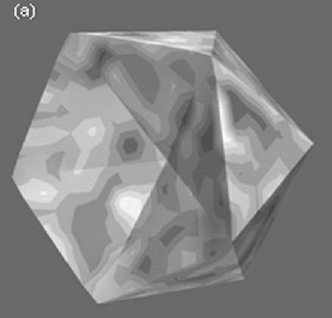 Gaelle Bealle, Jacques Jestin and David Carriere
Gaelle Bealle, Jacques Jestin and David Carriere
We report the osmotic deformation of micron-size catanionic vesicles with icosahedral symmetry (20 faces, 12 vertices) upon incubation in small solutes (NaCl, glucose). The vesicles remain icosahedral at low osmotic pressure gradients across the bilayer, or spherical for outwards gradients. Above a threshold value of inwards pressure, the icosahedra develop a buckling instability: a depression is initiated at one or two ridges, grows until one vertex snaps into the icosahedra, leading to full collapse of one half of the vesicle into the other. Despite large local inversions in curvature, no release of encapsulated solutes is observed before the residual volume reaches negligible small values. Thin shell models correctly capture the buckling patterns of icosahedra in the low deformation limit. Comparison of experimental results with Monte Carlo simulations provides a first estimate for the conditions of shell disruption, and suggests it is predominantly driven by curvature rather than two-dimensional stretching or compression. The relevance of these results for the mechanics of viral capsids and controlled release applications is discussed.










